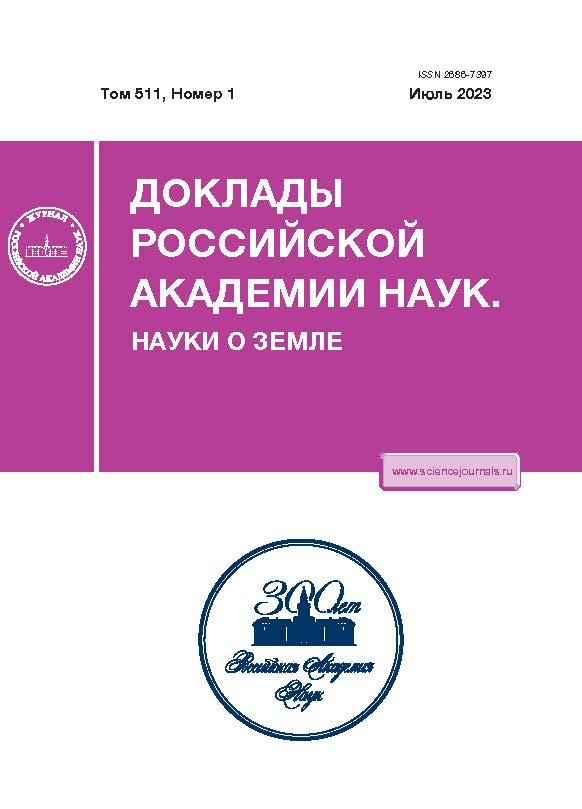ECOLOGICAL RESOURCES OF BOREAL FORESTS IN ABSORPTION OF GREENHOUSE GASES AND IN ADAPTATION TO GLOBAL WARMING (TO THE PARIS AGREEMENT ON CLIMATE CHANGE)
- 作者: Kotlyakov V.M.1, Kolomyts E.G.2, Sharaya L.S.3
-
隶属关系:
- Institute of Geography, Russian Academy of Sciences
- Institute for Fundamental Problems of Biology, Russian Academy of Sciences
- D.N. Pryanishnikov All-Russian Research Institute of Agrochemistry
- 期: 卷 511, 编号 1 (2023)
- 页面: 124-129
- 栏目: GEOECOLOGY
- ##submission.dateSubmitted##: 30.01.2025
- ##submission.datePublished##: 01.07.2023
- URL: https://edgccjournal.org/2686-7397/article/view/649881
- DOI: https://doi.org/10.31857/S2686739723600510
- EDN: https://elibrary.ru/RZNLQA
- ID: 649881
如何引用文章
详细
On the example of the forests of the Oka basin, an experiment was carried out to numerically solve the dual task set by the Paris (2015) Agreement on climate change: to assess the absorption of CO2 from the atmosphere by forest communities under current global warming and their adaptation to climate change. With the help of empirical-statistical modeling, the mechanisms of forest cover regulation of the carbon cycle are revealed, with the effect of mitigating the predicted warming. Assessments of the adaptive potential of forests and its role in carbon adsorption and conservation have been carried out. The proposed index of elastic-plastic functional stability of forest ecosystems was used as an indicator of adaptation. The role of forest sustainability as a direct environmental factor in the absorption of greenhouse gases has been statistically established. An unambiguous picture of a significant increase in the ecological resources of boreal and nemoral forests has been obtained – their adsorption capacity with an increase in adaptive potential. It has been established that during the predicted 100-year period, the overall elastic-plastic stability of forest formations in the region should increase, especially at the current rate of global warming. Due to this, a significant increase in the ability of boreal and, to a lesser extent, nemoral forests to absorb greenhouse gases should also be expected. The obtained results of regional predictive modeling demonstrate the effectiveness of the coupled study of the adsorption capacity of forest biomes and their adaptation to a changing climate.
作者简介
V. Kotlyakov
Institute of Geography, Russian Academy of Sciences
编辑信件的主要联系方式.
Email: vladcot4@gmail.com
Russian, Moscow
E. Kolomyts
Institute for Fundamental Problems of Biology, Russian Academy of Sciences
编辑信件的主要联系方式.
Email: egk2000@mail.ru
Russian, Pushchino
L. Sharaya
D.N. Pryanishnikov All-Russian Research Institute of Agrochemistry
Email: egk2000@mail.ru
Russian, Moscow
参考
- Котляков В.М. Избранные сочинения. Книга 3. География в меняющемся мире. М.: Наука, 2001. 411 с.
- Кондратьев К.Я., Крапивин В.Ф., Савиных В.П. Перспективы развития цивилизации. Многомерный анализ. М.: “Логос”, 2003. 576 с.
- Албриттон Д.Л., Баркер Т., Башмаков И. Изменение климата. 2001 г. Обобщенный доклад МГЭИК / Под ред. Р.Т. Уотсона. Geneva: World Meteorological Organization, 2003. 220 p.
- Le Quere C., Moriary R., Andrew R.M. Global carbon budjet 2014 // Earth Syst. Sci. data. 2015. V. 7. Iss. I. P. 47. https://doi.org/10.5194/essd-7-47-2015
- Швиденко А.З., Щепаченко Д.Г., Кракснер Ф., Онучин А.А. Переход к устойчивому управлению лесами России: теоретико-методические предпосылки // Сибирский лесной журнал. 2017. № 6. С. 3–25.
- Paris Agreement. Conference of the Parties Twenty-first session. Paris, 30 Nov. to 11. Dec., 2015. 19 p.
- Hansen J., Sato M., Ruedy R. Climate simulations for 1880–2003 with GISS model E // Climate Dynamics. 2007. V. 29. P. 661–696. https://doi.org/10.1007/s00382-007-0255-8
- Pope V.D., Gallani M.L., Rowntree P.R., Stratton R.A. The impact of new physical parametrizations in Hadley Centre climate model – Had-CM3 // Climate Dynamics. 2000. V. 16. P. 123–146.
- Коломыц Э.Г. Локальные механизмы глобальных изменений природных экосистем. М.: Наука, 2008. 427 с.
- Кобак К.И. Биотические компоненты углеродного цикла. Л.: Гидрометеоиздат, 1988. 248 с.
- Орлов Д.С., Бирюкова О.Н., Суханова Н.И. Органическое вещество почв Российской Федерации. М.: Наука, 1996. 253 с.
- Цельникер Ю.Л. Газообмен СО2 в лесных биогеоценозах // Идеи биогеоценологии в лесоведении и лесоразведении. М.: Наука, 2006. С. 213–229.
- Эшби У.Р. Введение в кибернетику. Пер. с англ. М.: Изд-во Иност. лит-ры, 1959. 432 с.
- Шмальгаузен И.И. Кибернетические вопросы биологии. Новосибирск: Наука,1968. 224 с.
- Сукачев В.Н. Избранные труды. Т. 1-й. Основы лесной типологии и биогеоценологии. Л.: Наука, 1972. 418 с.
- Коломыц Э.Г., Розенберг Г.С., Шарая Л.С. Методы ландшафтной экологии в прогнозных оценках биотической регуляции углеродного цикла при глобальном потеплении // Экология. 2009. № 6. С. 1–8. https://doi.org/10.1007/s00382-007-0255-8
- Shary P.A., Sharaya L.S., Mitusov A.V. Fundamental quantitative methods of land surface analysis // Geoderma. 2002. V. 107. № 1–2. P. 1–32.
- Одум Ю. Экология. Т. 1. Пер. с англ. М.: Мир, 1986. 328 с.
- Растительность Европейской части СССР. Грибова С.А., Исаченко Т.И., Лавренко Е.М., ред. Л.: Наука, 1980. 429 с.
- Montgomery D.C., Peck E.A. Introduction to Linear Regression Analysis. New York: John Wiley & Sons. 1982. 504 p.
- Лосев К.С. Экологические проблемы и перспективы устойчивого развития России в XXI веке. М.: Изд-во “Космосинформ”, 2001. 399 с.
补充文件









